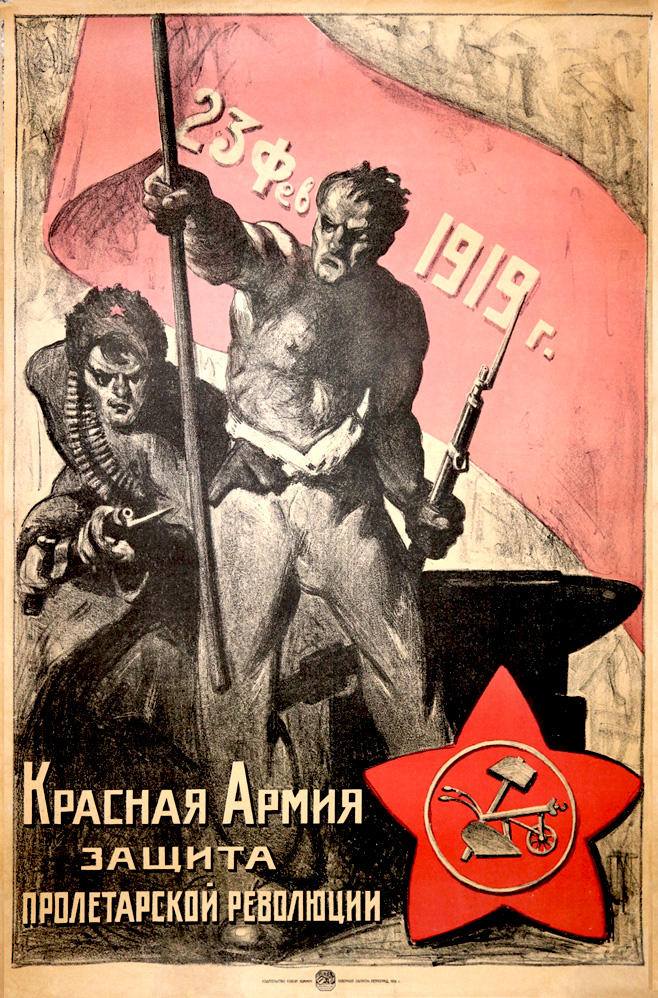
El Ejército Rojo es la defensa de la revolución del proletariado.
Número de Cartel: PP 1000
Información sobre el cartel: On the flag: "23 February 1919". The date signifies the second anniversary (1917-1919) of the February Revolution; the cataclysmic event that led to the October Revolution in 1917. At the lower left is the hammer and plough symbol for the Red Army. This was a symbol approved on April 19, 1918 and it was replaced by the hammer and sickle in August 1918.
Tamaño: 38.5x27
Tipo de cartel: Litografía
Fecha de publicación: 1919
Fuentes:
Soviet Posters of the era of the Civil War 1918-1921 by B.S. Butnik-Siverskii (1960), page 267, poster 1240.
Stites, R. (1991). Revolutionary dreams: Utopian vision and experimental life in the Russian Revolution. New York: Oxford University Press. (hammer and plough symbol)
En el catologo: PP 1000 Revolution b
Artista: Artist Unknown — неизвестный художник
The artist's name on the poster is not indicated. By assigning Artist Unknown to a poster it also could mean the artist used a chop mark whereby no signature is seen thus rendering the artist's identity anonymous.
Leer más...
Imprenta: Printer not indicated —
Editorial: Union of Communes (SKSO) of the Northern Region — Союза коммун Северной области (СКСО)
The Union of Communes of the Northern Region (SKSO) was a political zone encompassing Petrograd, Novgorod, Pskov, Olonets, Arkhangel’sk, and the provinces of Vologda, Severodvinsk and Cherepovets along with Severnaia Oblast and Severnaia Commune. SKSO was based on an association of Soviets (local councils) that existed from April 1918 until February 1919. It was formed in Petrograd (St. Petersburg) at the First Congress of Soviets of the Northern Region-- held April 26–29, 1918. The congress elected a cent...
Leer más...